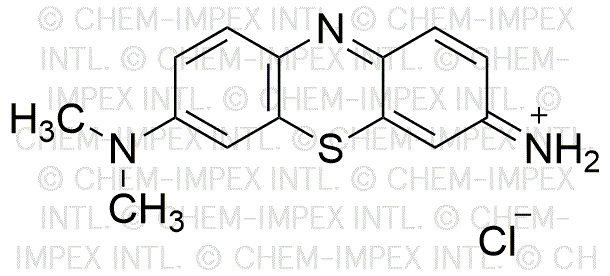Giemsa stain, modified solution is widely utilized in research focused on:
- Histopathology: This stain is crucial for examining tissue samples under a microscope, allowing pathologists to identify cellular structures and abnormalities, which aids in diagnosing diseases such as cancer.
- Cytogenetics: It is extensively used for staining chromosomes in genetic studies, helping researchers visualize chromosomal abnormalities and aiding in the diagnosis of genetic disorders.
- Microbiology: The stain is effective in differentiating between various types of bacteria and parasites, making it invaluable in clinical laboratories for identifying infectious agents.
- Blood Smear Analysis: In hematology, Giemsa stain is employed to analyze blood smears, assisting in the identification of blood cell types and diagnosing conditions like anemia and leukemia.
- Research in Cell Biology: The modified solution is used in various cell biology experiments to visualize cellular components, enhancing understanding of cellular processes and interactions.
General Information
Properties
Safety and Regulations
Applications
Giemsa stain, modified solution is widely utilized in research focused on:
- Histopathology: This stain is crucial for examining tissue samples under a microscope, allowing pathologists to identify cellular structures and abnormalities, which aids in diagnosing diseases such as cancer.
- Cytogenetics: It is extensively used for staining chromosomes in genetic studies, helping researchers visualize chromosomal abnormalities and aiding in the diagnosis of genetic disorders.
- Microbiology: The stain is effective in differentiating between various types of bacteria and parasites, making it invaluable in clinical laboratories for identifying infectious agents.
- Blood Smear Analysis: In hematology, Giemsa stain is employed to analyze blood smears, assisting in the identification of blood cell types and diagnosing conditions like anemia and leukemia.
- Research in Cell Biology: The modified solution is used in various cell biology experiments to visualize cellular components, enhancing understanding of cellular processes and interactions.
Documents
Safety Data Sheets (SDS)
The SDS provides comprehensive safety information on handling, storage, and disposal of the product.
Product Specification (PS)
The PS provides a comprehensive breakdown of the product’s properties, including chemical composition, physical state, purity, and storage requirements. It also details acceptable quality ranges and the product's intended applications.
Certificates of Analysis (COA)
Search for Certificates of Analysis (COA) by entering the products Lot Number. Lot and Batch Numbers can be found on a product’s label following the words ‘Lot’ or ‘Batch’.
*Catalog Number
*Lot Number
Certificates Of Origin (COO)
This COO confirms the country where the product was manufactured, and also details the materials and components used in it and whether it is derived from natural, synthetic, or other specific sources. This certificate may be required for customs, trade, and regulatory compliance.
*Catalog Number
*Lot Number
Safety Data Sheets (SDS)
The SDS provides comprehensive safety information on handling, storage, and disposal of the product.
DownloadProduct Specification (PS)
The PS provides a comprehensive breakdown of the product’s properties, including chemical composition, physical state, purity, and storage requirements. It also details acceptable quality ranges and the product's intended applications.
DownloadCertificates of Analysis (COA)
Search for Certificates of Analysis (COA) by entering the products Lot Number. Lot and Batch Numbers can be found on a product’s label following the words ‘Lot’ or ‘Batch’.
*Catalog Number
*Lot Number
Certificates Of Origin (COO)
This COO confirms the country where the product was manufactured, and also details the materials and components used in it and whether it is derived from natural, synthetic, or other specific sources. This certificate may be required for customs, trade, and regulatory compliance.


